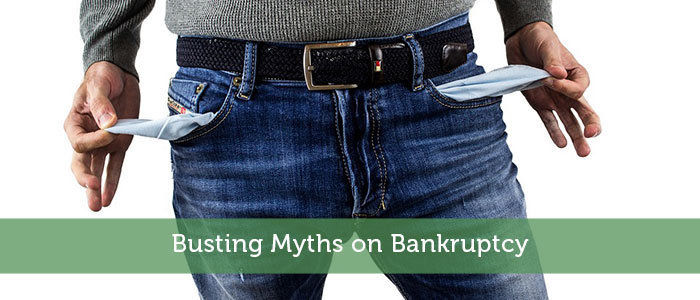Bankruptcy is generally seen as a financial failure, the end of the line, waving the white flag when you have no other options. However, this may be a limited point of view. If we take a closer look, you can see that bankruptcy is a procedure rife with misinterpretation and myths. Closer views will show that there is actually much more to it.
What Is Bankruptcy?
It’s important to understand what exactly bankruptcy means. For example, according to David M. Offen, a bankruptcy lawyer, “the most common type of bankruptcy is Chapter 7. Often referred to as liquidation bankruptcy, Chapter 7 bankruptcy is used by those who don’t have a lot of property or other assets.” When this takes place, a trustee is appointed by a bankruptcy court to take possession of the assets of the business and distribute them among the creditors. Following this distribution process and payment for the trustee, the business receives a discharge, releasing the owner from an obligation to their debts. This is only one of three major types that you are likely to encounter.
Chapter 11 is generally reserved for larger corporations due to cost, but also gives you the greatest chance to continue on after bankruptcy. In this case, the business is reorganized under a trustee, who can sometimes be the owner. The company files a plan of reorganization outlining how it will deal with its creditors. Creditors will then vote on it, and a court will approve it if they find it fair and equitable. Get ready to wait, though, as it generally takes a year or more to confirm a plan.
Chapter 13 is rather unique, in that while it’s generally intended for consumers, you could turn it around for your business if you run a sole proprietorship. When you file, you provide a repayment plan with the bankruptcy court detailing how you are going to repay your debts. This would allow you to avoid losing personal assets that may be tied to your business.
Recommended Bankruptcy Posts:
Is Bankruptcy All Bad?
Bankruptcy generally gets a bad rap as an all-around negative, but this isn’t true so much as the fact that there are rights and wrongs surrounding it, for example, cost.
We mentioned earlier that Chapter 7 was designed for businesses that planned on liquidating their assets rather than moving on. But it is also the least expensive of the three types of business bankruptcy, making it more attractive for small businesses. In addition, technically, there is the possibility for one to be able to start again after a Chapter 7. If no one bought your business assets when they were put up for sale, and the trustee was not interested, you can buy back your own assets in some cases. This is rare, but not impossible. The help of a good bankruptcy lawyer can often determine not just what type of bankruptcy is best for your business, but also the finer details of the filing process. So, when weighing your options, it’s best to see whether you are a good fit and where you will be left financially to rebuild afterward. A skilled bankruptcy lawyer is an invaluable asset here.
How Can I Make Bankruptcy Work For Me?
At the core, you need to recognize that bankruptcy serves as a “safety net” of sorts for entrepreneurs and others. The idea here is to allow for businesses that face economic hardship a fair and reasonable way to try and discharge their debts and even begin an exit strategy if the situation is unsolvable. For example, with bankruptcy comes not only the formal discharge of debts, but something called an automatic stay.
An automatic stay is an order of the bankruptcy court that goes into effect as soon as you file your bankruptcy case. This covers a wide swath of areas, but generally keeps creditors from doing many things to try and get money from you, like calling you, writing you a collection letter, suing you, and other actions. The automatic stay remains in effect to protect you until the bankruptcy court issues your discharge. As a result, when planning your bankruptcy, consider what exactly losing these debts or keeping the figurative wolves away from your door will allow you to do. Is it about giving you time to plan another financial move? How about keeping some peace of mind during a time that is likely already trying? There are plenty of reasons to consider bankruptcy, not as an ending, but as another step to your ambitions.
Also compare the difference between chapter 7 and chapter 11 bankruptcy.





